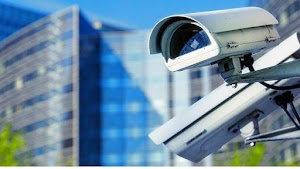Access Control & Entry Systems
- What is access control, and how does it work?
Access control is a security system that manages who can enter specific areas of a building or property. It works by requiring users to authenticate themselves through credentials like key cards, fobs, PIN codes, or biometric data. When valid credentials are presented to a reader, the system verifies the authorization level and grants or denies access accordingly. Modern access control systems can be networked, allowing administrators to manage permissions remotely, track entry events, and integrate with other security systems.
- How do commercial key fob door entry systems work?
Commercial key fob door entry systems work through RFID (Radio-Frequency Identification) technology. Each key fob contains a unique encrypted code. When the fob is placed near a reader, it transmits this code wirelessly. The reader sends the code to a control panel, which checks if that code has permission to access that particular door. If authorized, the control panel sends a signal to unlock the door. The system logs each entry attempt, allowing administrators to track who entered where and when. These systems can be programmed to restrict access based on time of day, specific areas, or user roles.
- What are the benefits of electronic door locks?
Electronic door locks offer numerous benefits over traditional locks:
- Enhanced security through encryption and authentication protocols
- No need to rekey locks when keys are lost—simply deactivate credentials
- Detailed access logs showing who entered and when
- Ability to grant temporary access for visitors or contractors
- Remote management capabilities for adding/removing users
- Scheduled access control (restricting entry during certain hours)
- Integration with alarm systems and video surveillance
- No physical keys to lose or duplicate
- Potential for touchless entry options (especially important in health-sensitive environments)
- What does an access control technician do?
An access control technician installs, configures, maintains, and repairs electronic access control systems. Their responsibilities include:
- Installing hardware components such as card readers, electromagnetic locks, and door controllers
- Running and terminating wiring for power and data
- Configuring control panels and system software
- Programming credentials and setting up user permissions
- Integrating access control with other security systems
- Troubleshooting system issues and performing regular maintenance
- Providing training to system administrators
- Ensuring installations comply with building codes and fire safety regulations
- Upgrading existing systems with new technology when needed
- What is gate access control, and how does it work?
Gate access control is a security system designed specifically for controlling vehicle or pedestrian access through gates. It works by requiring users to authenticate themselves before the gate opens through methods such as:
- RFID transmitters (like those attached to car visors)
- Proximity cards or key fobs
- PIN keypads
- License plate recognition cameras
- Intercom or telephone entry systems
- Mobile apps
- Biometric readers
When valid credentials are presented, the system verifies authorization and sends a signal to the gate operator to open. Systems typically include features such as visitor management, remote operation capabilities, and integration with property management software. Gate access control is commonly used in residential communities, commercial properties, parking facilities, and industrial sites.
- Can gate access systems be integrated with video surveillance?
Yes, gate access systems can be seamlessly integrated with video surveillance. This integration provides enhanced security through:
- Visual verification of who is entering or attempting to enter
- Video recording of all gate transactions for security documentation
- License plate recognition for automated vehicle access
- Motion-triggered recording when someone approaches the gate
- Two-way visual communication for remote visitor management
- Push notifications with video clips when unauthorized access is attempted
- Synchronized timestamps between access events and video footage for easy investigation
- Remote monitoring and operation via smartphone apps or central monitoring stations
This integration creates a comprehensive security solution that both controls access and provides visual documentation of activity at entry points.
Security Camera & Surveillance Systems
Basics and Terminology
- What does CCTV Mean?
This means Closed Circuit Television (CCTV) and is the use of a limited number of monitors in a specific place which receive a signal directly from video cameras.
- What is CCTV?
CCTV means Closed Circuit Television. In this case, it is a type of security camera.
- What is a CCTV camera?
A CCTV camera is a closed circuit tv camera in the surveillance industry. That means the camera does not compress the image at the camera. The cameras signal is set to the digital video recorder (DVR) via an RG59 cable with BNC connections.
- What’s the difference between surveillance cameras and security cameras?
Nothing, they are exactly the same thing with two different names. For example, car or vehicle.
- How do IP surveillance cameras work?
IP surveillance cameras work by converting video images into data packets that are transmitted over a network. Unlike traditional CCTV cameras, IP cameras have built-in processors and web servers that compress, encode, and stream video directly. Each camera connects to the network via Ethernet cable or WiFi and is assigned a unique IP address. This allows the camera to communicate directly with network video recorders (NVRs) or video management software. IP cameras can be accessed remotely through the internet using secure authentication, enabling users to view live footage or recorded video from anywhere. Advanced features include built-in analytics, two-way audio, and integration with other networked security systems.
- How are CCTV and IP surveillance cameras different?
CCTV (analog) and IP surveillance cameras differ in several key ways:
- Connection Type: CCTV cameras connect directly to the DVR using Siamese cable, while IP cameras connect to an NVR via Ethernet cable and operate on your network.
- Security Considerations: CCTV cameras don’t have IP addresses and cannot be directly accessed or hacked over the internet, offering inherent security benefits. IP systems typically use network-based connections that require additional security measures.
- Resolution Capabilities: IP cameras offer higher maximum resolutions (up to 20 megapixels) compared to CCTV cameras (maximum of 4K/8 megapixels).
- Advanced Features: IP systems support analytics and intelligence features like people/vehicle counting and trip lines, as well as specialty cameras offering 180° or 360° views, which CCTV systems don’t provide.
- Cost Differences: CCTV systems are generally less expensive than comparable IP systems, sometimes 2-4 times less.
- Network Impact: CCTV systems don’t utilize network bandwidth except during remote viewing, while IP cameras can use bandwidth (approximately 6 Mbps per 4K camera even with H.265 compression).
- Performance Considerations: CCTV systems typically have better stability and no latency issues, while IP cameras may experience up to 3 seconds of latency due to on-camera compression.
Video Recorders and Storage
- What does DVR Mean?
DVR stands for Digital Video Recorder and is an electronics device or software which records video straight onto one of many types of storage such as disk drives, USB flash memory, SD memory cards or mass storage devices. This can be done directly or via a network. The term can also cover set-top boxes with inbuilt recording, a variety of software which can be used for both video capture and playback via a personal computer and even certain portable media players with recording functions.
- How long will my security camera DVR record?
The amount of time a recording device such as a DVR can archive depends on many variables: 1) The size of the storage device ie: hard drive 2) The cameras resolution. 3) The cameras frame rate 4) The record settings such as recording only when there is motion vs all the time. Additionally there are other elements that can affect your record times as well which generally occur on a case by case basis.
- What happens to my security camera DVR if I lose my power?
Most security camera DVR’s are set up to automatically continue recording when power is restored. We highly recommend the addition of an Uninterruptible Power Supply (UPS) which functions as temporary backup power and usually provides effective surge protection as an additional benefit.
- What is an NVR system?
An NVR system is a security camera system that uses IP cameras connected to a network video recorder via a cat5e or cat6 cable.
- What is an NVR camera?
There is no such thing as an “NVR Camera”. It would be an IP camera that would connect to a network video recorded (NVR).
- What is an NVR in CCTV?
There is no NVR in CCTV these are two different types of technology. NVR’s are used with an IP camera and CCTV cameras are used with DVRs.
Features and Capabilities
- Can I record audio with my security camera DVR?
Yes, most DVR’s come with an audio option. However, the number of audio channels do not always match the number of video channels so it is important to disclose your audio during your consultation. Additionally, since most analog cameras do not come with built in audio, you will probably need to purchase a separate microphone in order to achieve this goal.
- What is lux?
The lux is the unit of measurement for illuminance and luminous emittance, it is measured in luminous power over a particular area. When purchasing surveillance cameras they will often include the minimum lux value in the specifications which shows the light level at which the camera will record an acceptable image. The lower the lux rating the better a camera is at handling low light situations. Below is a chart containing real world examples of LUX in different environments.
- Direct sunlight ——————– 100,000 – 130,000 lux
- Full daylight, indirect sunlight — 10,000 – 20,000 lux
- Overcast day ———————– 1,000 lux
- Indoor office ———————- 200 – 400 lux
- Very dark day ———————- 100 lux
- Twilight ————————— 10 lux
- Deep twilight ———————- 1 lux
- Full moon ————————– 0.1 lux
- Quarter moon ———————– 0.01 lux
- Moonless clear night sky ———– 0.001 lux
- Moonless overcast night sky ——– 0.0001 lux
- Can I zoom in with my security camera?
In most cases only Pan, Tilt, Zoom (PTZ) type cameras will allow the user to zoom in and out. This type of camera is usually controlled with an optional joy stick controller. However there are cameras that have a motorized zoom lens installed. With these camera types you may have the ability to zoom in and out only.
- What are the benefits of an HD security camera system?
HD security camera systems offer significant advantages over standard-definition systems:
- Superior image clarity that can capture facial features and other identifying details
- Enhanced ability to zoom in on recorded footage while maintaining image quality
- Better performance in challenging lighting conditions
- Wider field of view while maintaining detail throughout the frame
- Improved night vision capabilities
- Better evidence quality for law enforcement purposes
- Reduced false alarms through clearer image analysis
- More effective deterrent effect when potential intruders can see the high-quality cameras
- Compatibility with modern recording technologies and integration with smart systems
- What features should I look for in a surveillance system?
When selecting a surveillance system, look for these key features:
- Resolution appropriate for your needs (1080p minimum recommended for most applications)
- Night vision capabilities with adequate range for your environment
- Weather resistance ratings for outdoor cameras (IP66 or higher)
- Motion detection with customizable sensitivity and zones
- Remote viewing capabilities via mobile apps or web browsers
- Adequate storage capacity with options for redundancy
- Frame rate suitable for your application (minimum 15fps, 30fps for high-activity areas)
- Field of view appropriate for the areas being monitored
- Audio recording if needed for your application
- Power backup options to maintain security during outages
- Analytics features such as pedestrian or vehicle detection with alerts
- Scalability to add cameras as needs change
- User-friendly interface for system management
Remote Access and Compatibility
- Can I view my security cameras remotely?
Some DVR’s have the capability of being viewed remotely via the Internet. In most cases this is achieved via Internet Explorer or the DVR’s proprietary software. It is important to note the speed and quality of the image via a remote connection is greatly dependent on the DVR’s or Cameras compression type and the speed of the Internet connection on both ends. Additionally some IP cameras will allow you to connect via a network or Internet directly to them.
- Are security camera DVR’s MAC compatible?
The majority of DVR’s are still not MAC compatible. However there are models in the industry that are MAC compatible. Just make sure to mention this when speaking to a surveillance representative.
- Are security camera DVR’s smartphone compatible?
The majority of DVR’s are still not Smart Phone compatible. For the select few that support Smart Phone technology they are generally limited to Droid 2 or iPhone models only. In most cases this type of remote viewing is achieved via the phone browser or a downloaded application. Additionally, you will only be able to view one camera at a time. It is important to note the speed and quality of the image via a remote connection is greatly dependent on the DVR’s or Cameras compression type and the speed of the Internet connection on both ends.
- Do you need Internet for security cameras?
For traditional wired IP or CCTV systems, you only need an internet connection to remotely view the cameras, both for live feed or recorded footage.
- Do you need WiFi for security cameras?
No, if you use a traditional surveillance system. The cameras are hard wired directly connected to the recorders.
- What security camera works without WiFi?
Both traditional CCTV and IP types of security cameras work without WiFi. Only wireless security cameras require WiFi.
- Does CCTV work without Internet?
Yes, the internet is only required if remote access to the security camera system is desired.
Selection and Installation
- How many security cameras do I need?
There are many factors that will contribute to the number of cameras that will be required in order to survey a particular area. Some of the factors are as follows: Area to be covered, Level of detail to be captured, Lighting condition, Visual obstructions, etc. The absolute best way to make this determination is to schedule an on site consultation.
- What are the best security cameras for home?
Selecting the “best” security camera for your home depends on where you want to place the security camera, the environment where it will reside and what the camera will need to focus on from its location. There are many styles, resolutions, lenses and types of night vision available on the market today, so first identify your needs, then look for a camera that will fit those needs.
- Which is better, wired or wireless security cameras?
A wired security camera solution is always the best way to go because wireless cameras can often lose their wireless connection, thus losing the ability to be viewed or to record footage.
- Which is better, wired or wireless CCTV?
A wired CCTV security camera solution is the more reliable option. Wireless cameras rely on a wireless signal and can often lose their wireless connection, thus losing the ability to record or view footage.
- Can I mix and match security cameras?
Yes, the type of camera should be determined by its location, the environment it will be placed in and the desired focal point of the camera.















